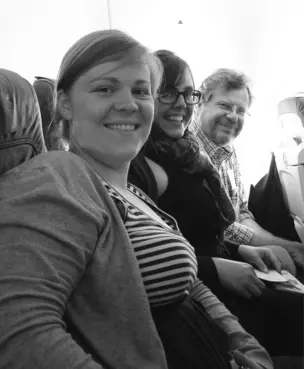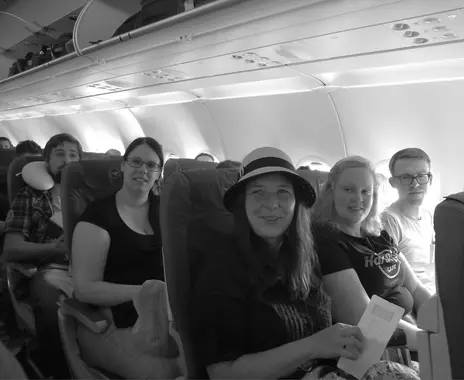Report from the Buxton Field Trip
A group of sixteen students left Germany on the 5th of July to spend seven days in Buxton, where the well-known Fringe Festival takes place every year. Our group traveled under the tutelage of Prof. Dr. Christoph Houswitschka, Johannes Weber, Barbara Kehler and Kerstin-Anja Münderlein.
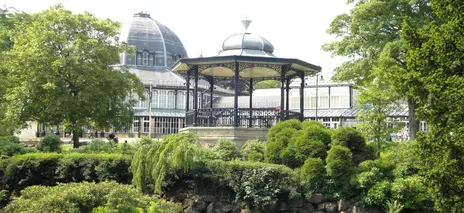
We left Bamberg at 5:30 in the morning, and although everyone was a bit tired, we were all buzzing with excitement, sharing the same love for British culture. Our first impression of Buxton was undoubtedly positive. The cosiness of our bed and breakfast made us feel right at home. After an early, and very proper, English dinner, some of our group went to see one of the first Fringe performances called An Evening with Charlotte Brontë, in which a young actress portrayed both Charlotte Brontë and her best-known character, JaneEyre. We were all impressed with our first experience of the Fringe Festival and could hardly wait for more.
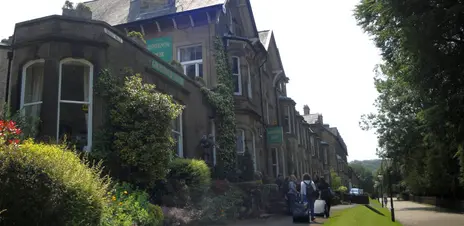
Early the next day we left for Manchester, and enjoyed a guided tour of its literary scene. We not only learned a lot about Charles Dickens' connection to Manchester, but also saw where Elizabeth Gaskell had lived. It was a very varied and exciting tour and provided us with a perfect overview of this fascinating city.
In the afternoon, we took a guided tour of the Royal Exchange Theatre. After the tour was over we watched a captivating performance of The Birthday Party. We were all immensely impressed by the play, and afterwards engaged in an intense discussion of its plot
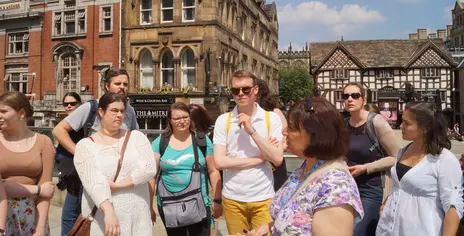
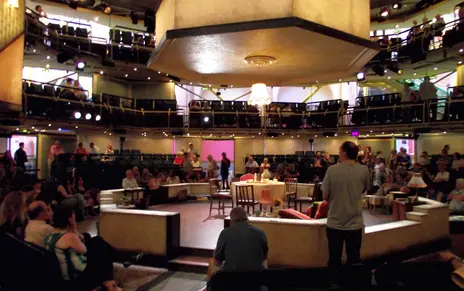
Our Sunday started idyllically with a walk through Buxton which combined poetry and nature. This offered us the opportunity to discover how the theme of nature is often incorporated into poetry and how nature itself is a source of inspiration for the poet. Our hike took us uphill and ended at Solomon's Temple. There, we could enjoy the beautiful weather and stunning landscape.
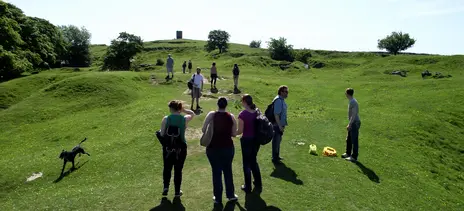
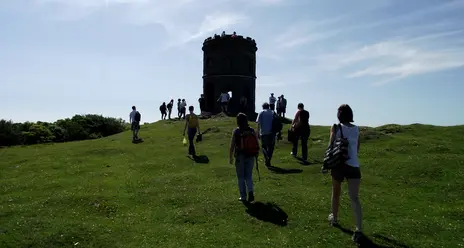
In the afternoon we went by bus to Eyam, perhaps not impressive at first sight. However, our first impression soon proved to be mistaken. Eyam is a beautiful, picturesque village that is best-known for its inhabitants’ courage during the time of the plague. The citizens of Eyam put themselves under quarantine to prevent the illness spreading. Sadly, most of the inhabitants died, but because of their heroic attitude, the plague did not reach the villages nearby. In this way they saved the lives of thousands.
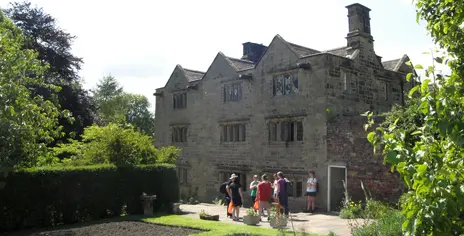
That evening, we attended another Fringe performance, The Great Exhibitionist. This was a half-improvised play, where the audience had the chance to direct the actors, by sending them telegrams. The play was about an important invention; ours was a machine, fuelled by pomegranate juice, which manufactured play-reviewing guinea pigs. The audience had a blast and their laughter filled the theatre.
The following day was entirely dedicated to Charlotte Brontë and Elizabeth Gaskell. In the morning we went to Hathersage, a beautiful village in the Peak District, where Charlotte Brontë stayed while writing Jane Eyre. Next, we walked to North Lees Hall, said to be the model for Thornfield Hall, the home of Mr. Rochester in Jane Eyre. Once again, we were very lucky with the weather, and some even noticed the first signs of sunburn.
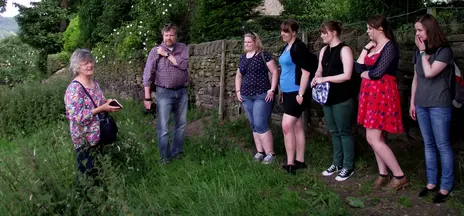
The highlight of the day had to be our visit to Haddon Hall. A lot of well-known films had been shot there; a number of Jane Eyre adaptions, as well as the 2005 adaption of Pride and Prejudice. One could even spot some of the locations from the latest Jane Eyre film. The afternoon was spent in a “bubble of delight and pleasure”, and even people who were not familiar with Jane Eyre were charmed by the, romantic rose garden of Haddon Hall.
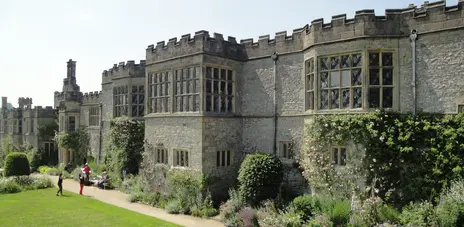
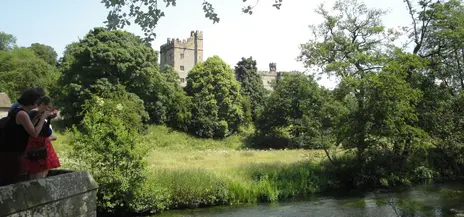
Afterwards, we went to Knutsford where we took afternoon tea, in the traditional English manner, with scones and sandwiches. As Knutsford was Elizabeth Gaskell’s hometown we jumped at the chance to go for a “Gaskell walk” after our refreshment. It offered a fascinating insight intoElizabeth Gaskell's life, particularly her novel Cranford, whose setting was apparently inspired by Knutsford itself.
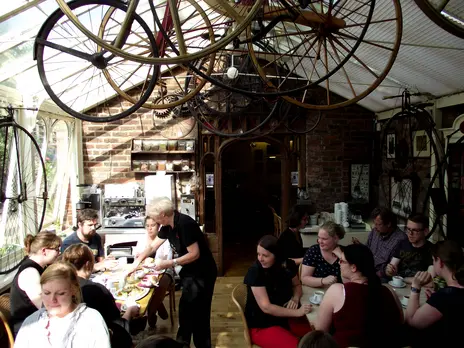
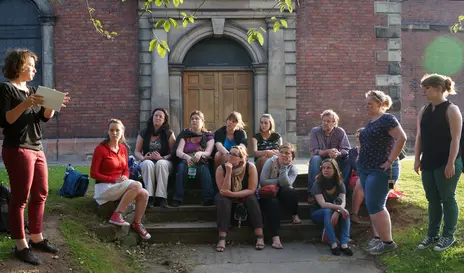
The following Tuesday was once more spent in Manchester, and we had a guided tour of the very impressive John Rylands library. At the end of the day, we saw another Fringe performance, Tomorrow's Dawn. This was a musical play, performed by pupils from France.
Our second to last day took us to Chatsworth House which is the seat of the Duke of Devonshire. The most exciting fact about Chatsworth House, however, is that it was used as Pemberley, the residence of Mr Darcy, in the 2005 film adaption of Jane Austen's Pride & Prejudice. We spent the whole day at Chatsworth House, in awe of its elaborate interior and boundless gardens.
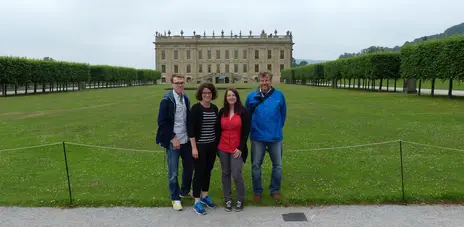
The day ended with the last Fringe performance, In a Land Much Like Ours. The plot of the play was very touching as it dealt with the death of a child. The actors did a great job and it left a lasting impression on each and every one of us. The play was much discussed during our final evening.
On Thursday we had to leave Buxton. It was not an easy goodbye, the history and natural beauty of northern England had truly touched our hearts.
Nevertheless, by midnight a group of exhausted, but very happy students were returned to Bamberg. I am sure we will always remember this field trip to Buxton with affection.
Freya Wurm
